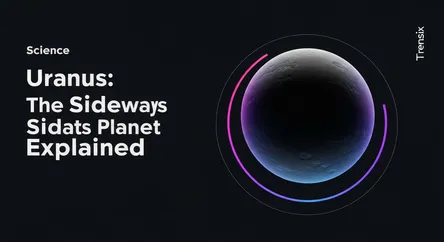Science
Uranus: The Sideways Planet Explained

Discover Uranus, the seventh planet from the Sun. Learn about its unique sideways rotation, icy composition, and stunning new views from the JWST.
What is it?
Uranus is the seventh planet from the Sun and the third-largest in our solar system. Classified as an ice giant, its atmosphere is primarily hydrogen and helium, but its interior is mostly composed of ices like water, methane, and ammonia surrounding a small rocky core. Its most distinctive feature is its extreme axial tilt of about 98 degrees, causing it to essentially spin on its side as it orbits the Sun. This results in extreme seasons, with each pole getting 42 consecutive years of sunlight followed by 42 years of darkness. Uranus also has a faint ring system and 27 known moons, named after characters from the works of William Shakespeare and Alexander Pope.
Why is it trending?
Uranus is currently trending due to breathtaking new images captured by the James Webb Space Telescope (JWST). These infrared images have provided the clearest and most detailed views of the planet's elusive rings, including the faint, dusty Zeta ring closest to the planet. The JWST has also revealed dynamic weather patterns, bright atmospheric storms, and a seasonal polar cap in stunning detail. This new data is reigniting scientific interest and fueling discussions for a dedicated flagship mission to explore Uranus and its mysteries up close.
How does it affect people?
While Uranus has no direct impact on daily life, its study is vital for planetary science. Understanding its unique tilt, magnetic field, and atmospheric composition challenges and refines our models of how planets form and evolve, not just in our solar system but around other stars. As a representative of the common 'ice giant' class of exoplanets, studying Uranus provides a crucial local example for understanding distant worlds. It pushes the boundaries of our knowledge, inspiring new technologies for space exploration and deepening humanity's understanding of its place in the cosmos.